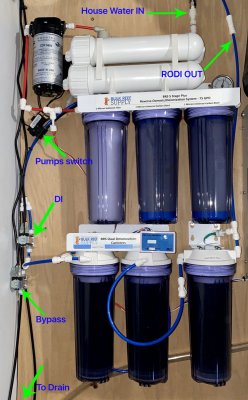- Joined
- Jan 5, 2018
- Messages
- 43
- Reaction score
- 22
People are still confusing the purpose of a flush valve vs a DI bypass valve.
Not sure who this is directed at but the purpose of a flush valve is to flush the membrane before/after use...
Flushing by bypassing the DI as well also helps to flush the other side of the membrane (TDS creep) which is the best option as your not sending unnecessary "dirty" water through the resin.
I have the 6 stage Fountanhead 150gpd $169 system. It is identical to BRS's 150gpd $339 system minus the add on 2nd RO membrane, dual TDS & a couple extra connectors. I compared the 2 side by side.
The closest I could compare it to the systems you sell is the $209.52 150gpd 4 stage system. Yours does include a pressure gauge but doesn't include the GAC filter and only has one DI cartridge. It does appear to use the same housings.
I do agree the horizontal DI cartridges specific to his system are not ideal. But please don't bash other vendors for offering an economical option. personally I'd pay the $30 more for the 6 stage vertical system. At least they offer it.
Last edited:



















